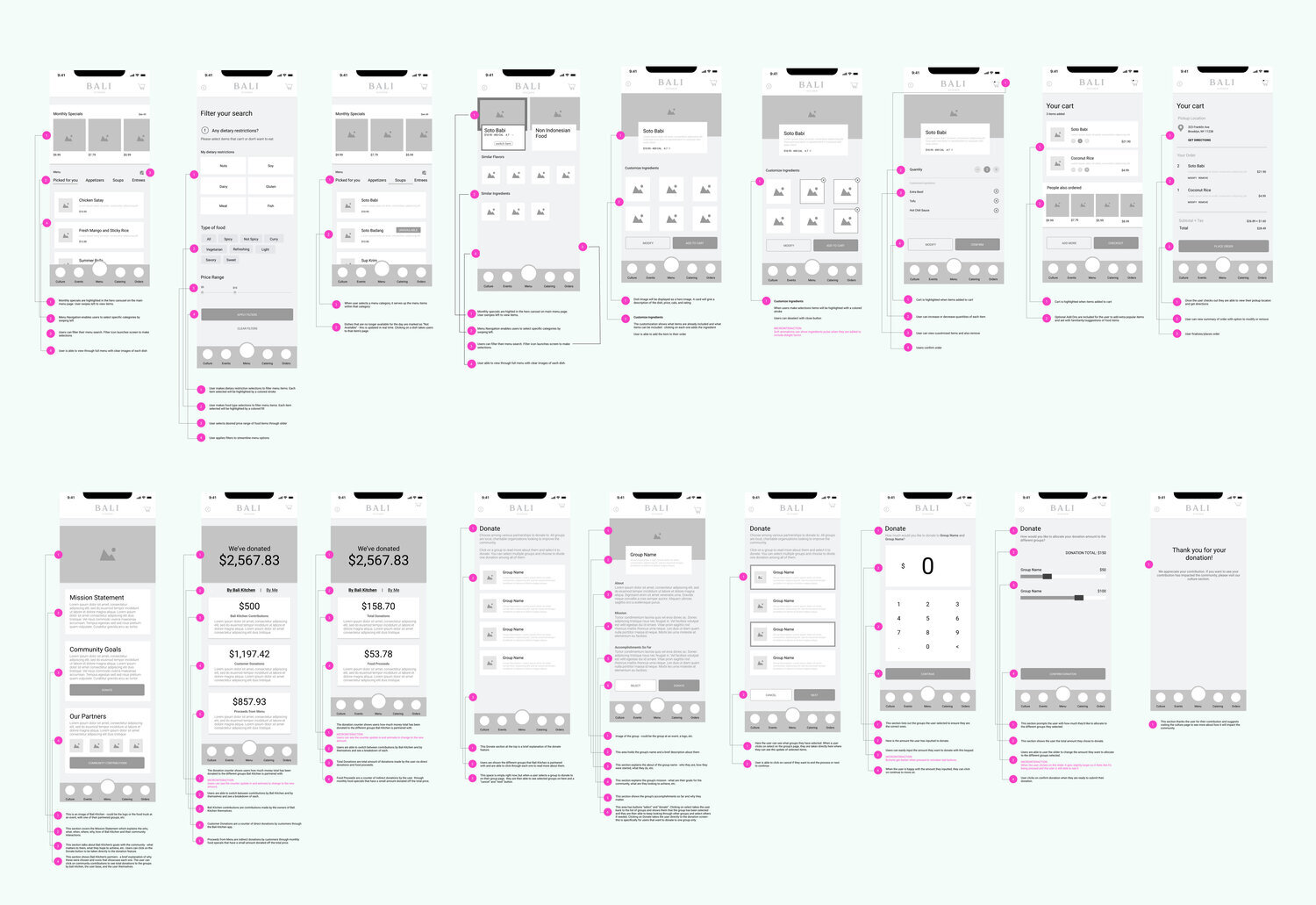Bali Kitchen
Role: UX Research, UX Design
Bali Kitchen Food Truck
01. Understand
Project Brief
The clients’ story begins with their 2001 immigration from Indonesia. They worked in the restaurant business until 2008 when the economic crisis forced many restaurants into bankruptcy. They worked random jobs in and out of the food industry, but their hearts have always believed in food as a common denominator for all humans, no matter who they are or where they came from.
They have recently discovered a unique opportunity to rekindle their love for the restaurant business by introducing their home-cooked Indonesian cuisine to the food truck landscape. The demand for their cuisine is driven by a shift away from large food chains and a growing preference for healthier, more distinctive options.
While they may not currently have the financial means to contribute to charities, their dedication to local causes is unwavering. They draw inspiration from Jose Andres’ philanthropic model, which has had a profound impact on the D.C. community, and aspire to make a similar difference in their own community.
To succeed in the food truck space, we will launch Bali Kitchen, a fresh brand experience that will showcase its cuisine, catering offerings, and truck locations across social media and a mobile application.
We’ve identified the following goals:
01.
Community through food
02.
Business Expansion
03.
Local Impact
Problem Statement
How might we bring fresh, delicious and nutritious options to food deserts and support food and hunger issues in the process?
Project Plan
02. Research
Research Methods
What we know about our users and the marketplace results from qualitative and quantitative research using Ethnography (Proxy), Competitive Analysis, User Interviews, Personas, and Journey Mapping.
Ethnographic Research (Proxy) | Audiences and Key Needs
Leveraged and evaluated research studies and academic papers that examined food truck scenes in cities around the country
Competitive Landscape | Audit
Analyzed the performance of content for successful food truck businesses to understand how users are engaging with it and to identify opportunities in content measurement.
User Interviews | Supporting Qualitative Research
Synthesized user interviews to understand audience needs who consume food truck cuisine at a high level.
User Personas | Needs and motivations
Developed persona based on user research and assumptions.
Journey Mapping | Big Picture Story
Arranging user needs and actions in a model that displays the total functionality of the service/product and prioritizes the work required to deliver that functionality.
03. Analysis
Competitive Landscape - Takeaways
The team researched known successful food trucks and the various applications often used to manage a food truck’s day-to-day functions. The goal was to understand the competitive landscape that Bali Kitchen was about to enter. We learned three main points:
01.
Be Familiar, But Different
This leads to desired food consumption through initial engagement and eventual conversion
02.
Make Money
Provide portable, fresh, good food at an affordable price
03.
Signal Community Leadership
Bring the restaurant to your customers - earn trust and grow loyalty
Ethnographic + User Research - Food Truck Business Owners and Patrons
The goal for this portion of the research was to learn more about Indonesian culture and cuisine in order to leverage appropriate elements throughout features during the design phase. We interviewed various food truck patrons to better understand their wants, needs, and pain points when visiting food trucks and how their expectations have changed due to Covid.
Source: Hawk, Zachary (2013), Gourmet Food Trucks: An Ethnographic Examination of Orlando’s Food Truck Scene, Case Studies, 36-77
Personas & Journey Mapping - Needs and Motivations
From our research, we were able to create two personas: Javier, the Foodie, and Savannah, the Mom.
Javier is always on the lookout for new food experiences. He is constantly searching for new restaurants and food events. When it comes to food trucks, his goal is to find a unique food experience while decreasing the struggle of finding new trucks and waiting in long lines.
Savannah is interested in eating in new places but would much rather choose things from a menu that she knows she will like. She doesn’t want to risk spending the money on a meal she won’t enjoy. Her goal is to ensure a good meal while decreasing the chances of wasting money.
The journey map outlines the experience users have when eating at a food truck from beginning to end. This helped to clearly see where potential pain points and gaps existed and how best to solve them.
04. Design
Storyboarding & Wireflows
Two user scenarios were defined after synthesizing the research data: pick-up and delivery.
The storyboarding process helped define the DNA of the flows, which generated key features for the app focused on the clients’ business goals.
Annotated wireflows created a visual framework for how the interactions are deployed within the application. This blueprint helped to create clear direction and alignment between our design team and project stakeholders.
Tone of Voice + Visual Language
Bali Kitchen is generous, comforting, engaging, and proactive. As a food truck company for everyone, our voice explains things in the simplest terms - we use straightforward human language. We employ gentle warmth with inclusivity for all customers. We’re approachable and casual and imbue an accessible, colorful culture.
Please think of us as your aunt who insists you have to have a second helping of her home-cooked dishes!
Final Designs
The prototype focused on key feature sets aligned with user needs to select time slots to solve long lines during pick up, food customization and comparison for cultural familiarity, and an optional donation feature to contribute to local food and hunger impact.
Customization, Compare, and Pickup Feature
Giving back - Donation Feature

















